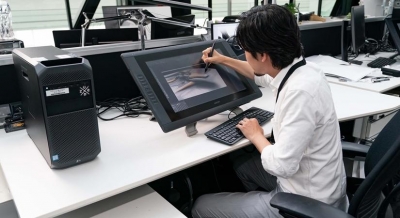Decoding Nissan's design philosophy
By IANS | Published: September 17, 2020 03:48 PM2020-09-17T15:48:40+5:302020-09-17T16:52:35+5:30
New Delhi, Sep 17 The much-awaited B-SUV, the Nissan Magnite is made on the philosophy of 'Make in India, ...

Decoding Nissan's design philosophy
New Delhi, Sep 17 The much-awaited B-SUV, the Nissan Magnite is made on the philosophy of 'Make in India, Make for the World and has been designed in Japan while keeping in mind the requirements and aspirations of Indian customers.
Ahead of the launch of Magnite in India, life spoke to Kei Kyu, Nissan's Future Design Director and the lead designer of the SUV, to know more about the design and the inspiration behind it. He also shares some car designs trends that are going to go big this year. Read excerpts:
What is the design inspiration behind the Nissan Magnite?
Kyu: At Nissan, when we create a new design, our primary objective is to understand the need of the customers. We need to have a deep appreciation for who our customers are, what is the nation's mood and the atmosphere of a country, how its people are behaving, and the new trends and fashions. This discovery of people's expectations is the starting point of our design approach. We strongly believe that design is a gift for the customers; it is not a commodity.
The Magnite is made on the philosophy of 'Make in India, Make for the World' and has been designed in Japan while keeping in mind the requirements and aspirations of Indian customers. As a Japanese OEM, we needed to express the Japanese sense in our product and at the same time focus on our core customer and market.
The concept is built on three fundamental design elements, namely Kabuku, Sui and Inase. Kabuku represents a pioneer and game-changer, Sui stands for purity of purpose and Inase denotes dynamic and vibrant energy. These elements reflect the attitude of the Indian market and people through our Japanese sense of culture and aesthetics.
How different is the Japanese design language from the Indian design language?
Kyu: Each market has its own uniqueness and clear differences. India is huge, busy, and colourful, with an incredible vibrant energy, with so many languages and tastes. I don't think anyone can describe India in just a few words - I might need my whole life to truly understand the vibrancy and depth of this country.
Even though Japan is a smaller island, we are also hugely diverse. And just like the Indian consumer, we too want to have more fun with car ownership and enjoy it more. The market moods may be different, but the passion and expectation for cars is the same.
How have the teams in India and Japan collaborated to develop the design of the SUV?
Kyu: The Nissan Magnite's journey was a multi-department effort that included design, engineering, product planning and marketing, all working together with a shared vision of our brand's future. Not to mention, the countless artisans who built and programmed the concept from an idea into a physical reality.
The rapport between the design teams across locations is quick, direct, spontaneous, and able to adjust fast to the changes happening in these very volatile markets where customers' demands change very often. The teams in Japan worked very closely with the India team for local insights which helped us in formulating our offering for the market. The B-SUV is the perfect blend of cultures that merges the design capabilities and insights of both countries.
How difficult has it become for car designers to match market's expectations?
Kyu: There are many complexities as it is not a static product, but an integral part of an owner's life. We ensured we give it a personality that reflects its function and could endure over time. We observed the Indian customers and their preferences, and realised the design needs to be aspirational.
We also understood that the Indian customer wants roominess in the cabin and that the car should have an attractive yet practical exterior design. Hence, we arrived upon an imposing SUV proportion in a dynamic silhouette. Lastly, as the customer will not be able to tell you what they want without seeing the product, we considered ourselves to be the customers and designed the concept SUV that would meet our desires.
What do you think an Indian customer wants from his or her car/SUV?
Kyu: The SUV has been highly popular in the Indian market as it makes commuting easy on diverse Indian road and weather conditions. The Indian customer is quite well informed about the latest car designs across the globe and is interested in owning an SUV that offers advanced technology and features, high ground clearance and substantial roominess in the cabin.
Which elements do you think differentiate the Nissan Magnite from its competitors?
Kyu: The Nissan Magnite has been built on Nissan's global SUV heritage and advanced technology, with iconic models such as the Patrol, Pathfinder, Armada, X-Trail, Juke, Qashqai, and KICKS. Its presence is such that it will be easily spotted as it stands out amongst the crowded and bustling streets.
The B-SUV's dynamic exterior also complements its key element of roominess, with sleek head lamps express solidarity and confidence, while the vertical line DTRL delivers a wider and advanced impression to the front. Its' modern exterior styling works well to emphasize its SUV strength, sturdiness and agility, while its distinctive three-volume construction
pg/tb
( With inputs from IANS )
Disclaimer: This post has been auto-published from an agency feed without any modifications to the text and has not been reviewed by an editor
Open in app